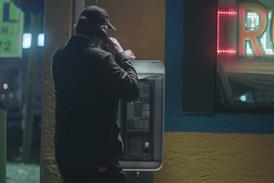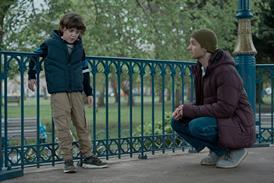In Kathmandu, at the start of the shoot for our documentary about a living goddess, surrounded by rituals, temples, and animal sacrifices, it seemed important to secure a blessing for the project from a living goddess. After offerings of a few rupees, we accepted our red “tika” marks and headed back onto the chaotic streets.
Nepal has a long tradition of worshipping young girls, or “Kumaris”, but one is different. She is chosen from many contenders, taken to live in a palace away from her family and worshipped as the living incarnation of the goddess Taleju, the omnipotent protector deity of the king and country. During her reign she cannot speak in public, her feet cannot touch the ground and she can only leave her palace 13 times a year for various festivals. She is the Royal Kumari, wide-eyed, raven-haired and just nine years old.
For centuries the Royal Kumari has blessed the king, placing a red tika mark on his forehead at an annual festival. Now the king has had the power to rule stripped from him and a fragile coalition of eight political parties is negotiating the way forward for the country. The big question for our programme was would he still come for his blessing? Or would the prime minister come in his place to be sanctioned to rule?
I’d first written a treatment for this documentary 12 years earlier and had kept faith with what I knew was a strong story. But it had still taken nearly a year of active negotiations for the BBC to confirm our first commission for This World on BBC2.
Dan, the AP, and I set off for Kathmandu at the beginning of September - perfect timing as Nepal is at a critical point in its move from monarchy to democracy and the political situation is changing dramatically. Our aim was to immerse ourselves in a culture that blends aspects of Hinduism and Buddhism with thousands of years of history.
We had two weeks before our reporter and cameraman arrived in which to establish key contacts and vital access and to pull together a schedule. It needed to incorporate the key elements of the story while remaining sufficiently flexible to cover events as they unfolded. One day we’d be filming Maoist rallies paying homage to Lenin, Marx and Mao.
The next day we’d be shooting sacrifices of goats and chickens where blood must be spilled on the altar of a deity (if you’re squeamish, the milk from a smashed coconut is an acceptable alternative). Or we’d be filming celebrations in which the entire population seemed to be out on the streets to worship the Indian Pop Idol winner, who had Nepali roots.
We also went election campaigning in a remote village, which had seemed a good idea at the time. After five hours of driving on unmade roads, followed by two hours walking up a vertical mountain path, our reporter Olenka Frenkiel, cameraman Marc Austin and I were crumbling, panting wrecks with faces redder than the Maoist flag.
The finale to our filming was three days of processions in which the Royal Kumari was carried through the streets of Kathmandu on a 4m-high gold chariot pulled by hundreds of eager men with long ropes. The chariot is so high that they have to cut all the electricity wires across the narrow city streets before the event. With the processions starting at dusk, within minutes it’s pitch black, the only lighting coming from the occasional flaming torch.
Our cameras, one Sony Z1 and two A1s, coped wonderfully - the night vision on the A1s gave a great atmospheric greenish tint to the packed Kathmandu streets. At several points the three cameras would be used at different ends of the city to capture simultaneous must-have sequences, or for different shots of the big events.
Two weeks of research and scheduling on location and two weeks of frantic filming gave us enough rushes to reach the top of Everest. However, by using an Avid system on a laptop in my hotel bedroom and a few external Firewire drives, we arrived home with translated transcripts and most of the material already digitised. The pressure is now on for delivery and we’re all determined that our incredible experience translates to the screen.
This World: the Goddess and the King is a Big Umbrella Media production for BBC2. It airs on Monday 5 November at 7pm
Martin Head: My tricks of the trade
Find a hotel with good internet access, preferably wireless, that works in your room - often I’d have four people on my bed all with laptops online as we researched the story and set up the schedule.
Take more cameras and more people who can use them than you think you need, so you can take it in turns to spend unavoidable whole days on the toilet! A mini-disc recorder and stereo mic are handy for wild (sound only) tracks and locally recorded music.
Make sure you have a large amount of dollars ready to cover all eventualities, plus contributor release forms translated into the local language.
Build relationships with great fixers who can make anything possible - and always, always be nice to your government liaison officer.


























No comments yet